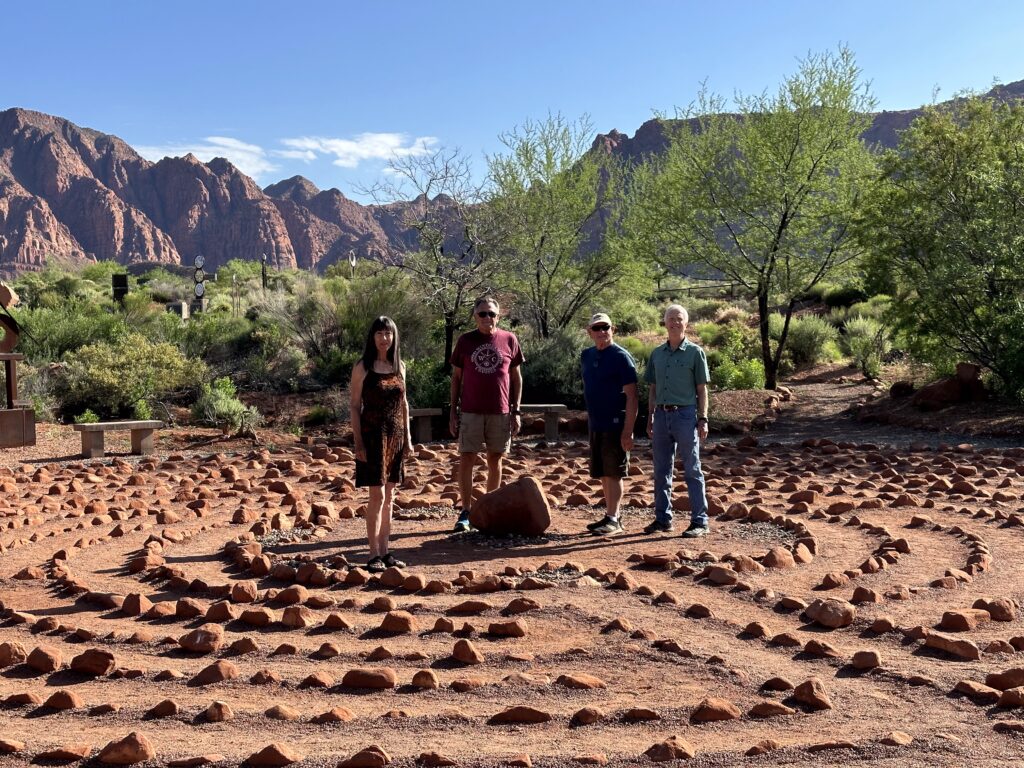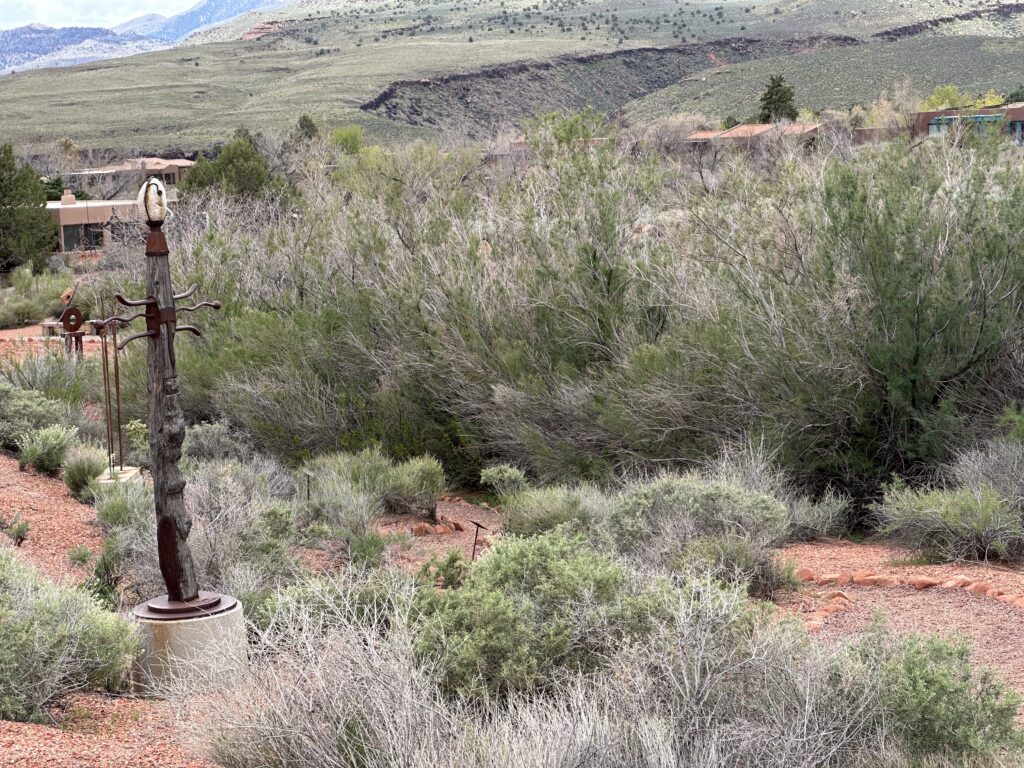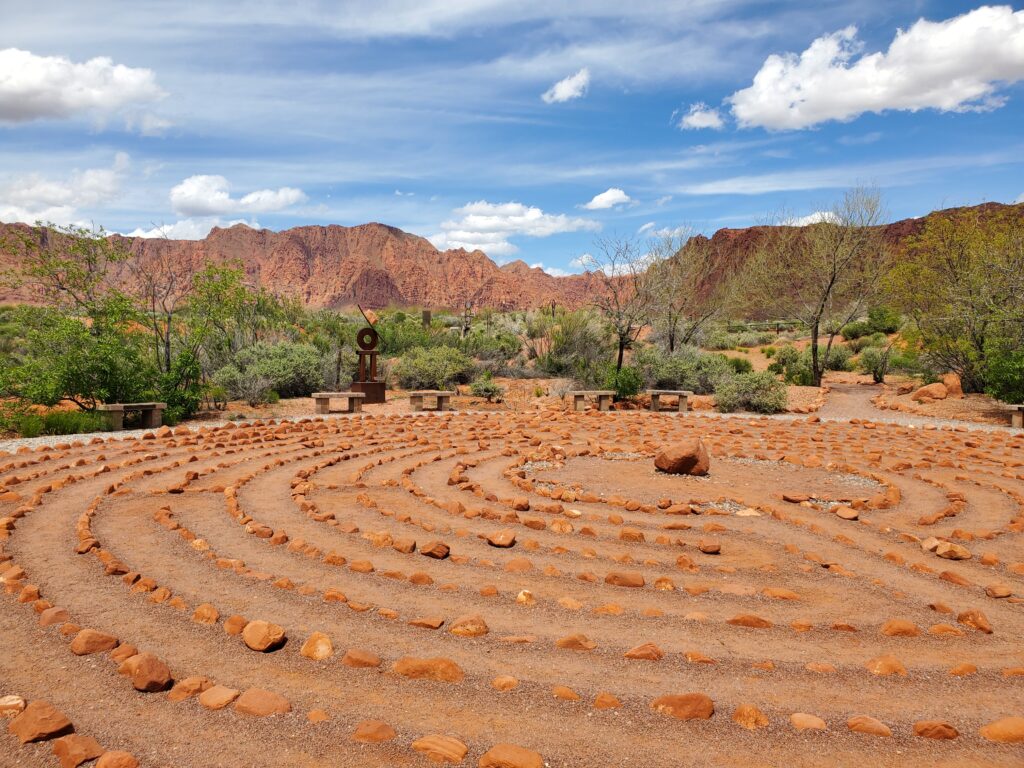
Preserving a Community Asset
The beauty of southern Utah has inspired the work of many wonderful artists. The tranquility of Kayenta also inspires moments of reflection among both residents and visitors. These two impulses are intrinsically woven together in the peaceful vistas of the of the Desert Rose Labyrinth and Sculpture Garden across the street from Kayenta Arts Village.
Originally built in 2004 by a group of residents on land donated by Terry Marten, the development of the labyrinth and collection of the artistic offerings in the area were facilitated by artist and long-time resident Cheryl Collins. She helped raise funds to build the facility and convinced her artist friends to donate their work. Today, under the auspices of the Kayenta Arboretum, Collins still works with a group of volunteers to maintain the site.
Over the years, increased visitor traffic and the growth of the invasive tamarisk have changed the experience of the labyrinth. At the invitation of Roger Head, chair of the Kayenta Arboretum, volunteers with the Desert Preservation Initiative (DPI) have been working to remove tamarisk from the area.
“Tamarisk increasingly impacts access to and the experience of the labyrinth,” says Head. “This is a very public site and one that is important to the overall impression of Kayenta.”
DPI President Chuck Warren is equally enthusiastic about the project. “The street view of the area was largely eliminated by the growth of this infestation and it was impacting the trail approaching the site,” he says. Beyond the view, the presence of tamarisk has other negative impacts. “Surprisingly there is considerable water in the gullies around the site which make possible the rapid growth of this dangerous plant,” says Warren, “thereby increasing fire danger” and, as Collins adds, “choking out the native plants.”
As the focus of the Arboretum is on successful desert landscaping and educating the public about what works best in this environment, once the tamarisk is removed, the area will be replanted by Arboretum volunteers. “The trail experience will be enhanced by removing the dense underbrush the tamarisk created and making the canal visible again,” says Head. “Basically, the tamarisk gave the appearance of an unkept jungle for our visitors, which detracts from the beauty of the sculptures displayed throughout the walk.”

